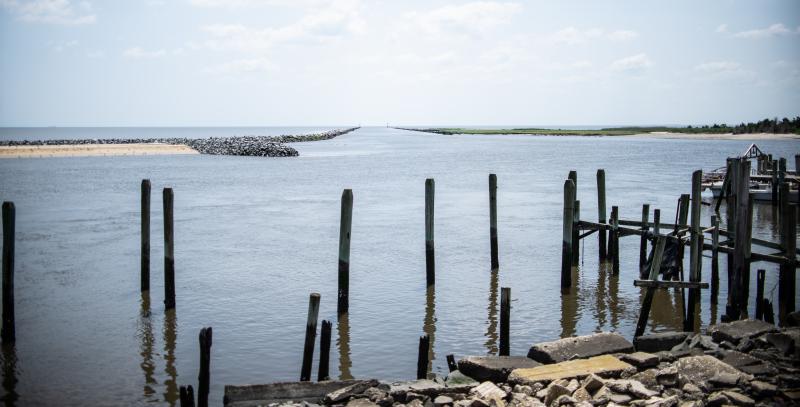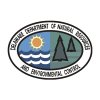Mispillion Harbor provides a refuge to migrating shorebirds and spawning horseshoe crabs which meet in an ecological wonder that draws tourists from around the world. DNREC, federal, local and conservation partners gathered May 25 to honor the completion of the Mispillion Harbor Restoration Project.
DNREC Secretary Shawn M. Garvin took to the podium with a positive note regarding the environment, the community and the tourism that is seen throughout the Cape Region.
"Following the devastation of Hurricane Sandy in 2012, our state wanted to take measures to increase efforts in addressing the resiliency needs of our unique coastal habitats. This specific project that was completed this spring provides ideal conditions for horseshoe crab spawning, thus creating an 'all you can eat buffet' of eggs for migratory birds, specifically the threatened red knot," said Garvin.
Mispillion Harbor is nationally and internationally recognized for attracting large numbers of migrating shorebirds, and of course the official marine animal of Delaware, the horseshoe crab. The restoration significantly increased the amount of sandy shoreline that is necessary for these marine animals and birds.
Not only does the project aid in the biodiversity of species in the Coastal Delaware Region, but provides a buffer to the community, protecting against storm surges. Taking this action will shield the immediate community that is more susceptible to rising sea levels and flooding; which, in turn, increases the amount of tourism to the beaches along the Delaware Bay and Atlantic Ocean.
"Extreme weather is becoming much more common and unpredictable. Restoring this harbor is a step toward taking action to mitigate against future damage from storms. The wildlife in this area is a magnet for tourism and draws people from all over the world. This site and many sites throughout our state are truly miracles of nature. We will continue to be more resilient moving forward because of our amazing partnerships with state, local, federal, and nonprofit organizations; and of course, the overwhelming interest from the community in these types of matters," said Sen. Tom Carper on the restoration's importance on many different levels.
"If you want to go fast, go alone. If you want to go far, go together," Carper exclaimed to the large crowd of contributors, delegates and community members on the significance of partnerships.
More restorations and projects of this nature are on the agenda moving forward.
"Hurricane Sandy created a catalyst for us to come together and invest in resiliency projects. We need to take the vital steps to tackle climate change, especially in Delaware given our natural and beautiful heritage. This project is a great model for what we can do, and what we will do moving forward in one of America's most popular tourist destinations. To improve biodiversity in a very fragile ecosystem, we need to think about conservation, restoration, and resilience," said Sen. Chris Coons.
"I want to thank my colleagues and the communities of Delaware for helping to create a better world for our children and maintain a positive and healthy legacy. It is nice to focus on something so positive that contributes to protecting our environment, showing a conservationist effort and increasing the protection of our community as well as our tourism," said Congresswoman Lisa Blunt Rochester, focusing on how things like this not only provide a great sanctuary for the future individuals to enjoy, but help educate children on environmental issues.
There has already been a positive change seen at this site, specifically with the species that visit.
"It is an honor and pleasure to have personally seen this project from the start and where we stand now at such a beautiful natural wonder. This is what you get when you have great partnerships and a great community, and to see the response is amazing. We need to continue to focus on the real needs such as protecting our communities and wildlife," said United States Fish and Wildlife Service Northeast Director Wendi Weber.
This project raised $5.8 million federally, while receiving $2 million from the state; it took about two years to complete.
"This project was ambitious, impactful and well put together by all involved. Although projects like this take time, it is great to see the positive outcome right over my shoulder today. Not only does this provide important protection for our coastal communities but is globally impactful to the species that frequent this area on their journey north. I am grateful to join with you today at the DuPont Nature Center, which offers so much to educating all on how unique Delaware is," said Vice President of Conservation Programs at the National Fish and Wildlife Foundation Eric Schwabb.





















































